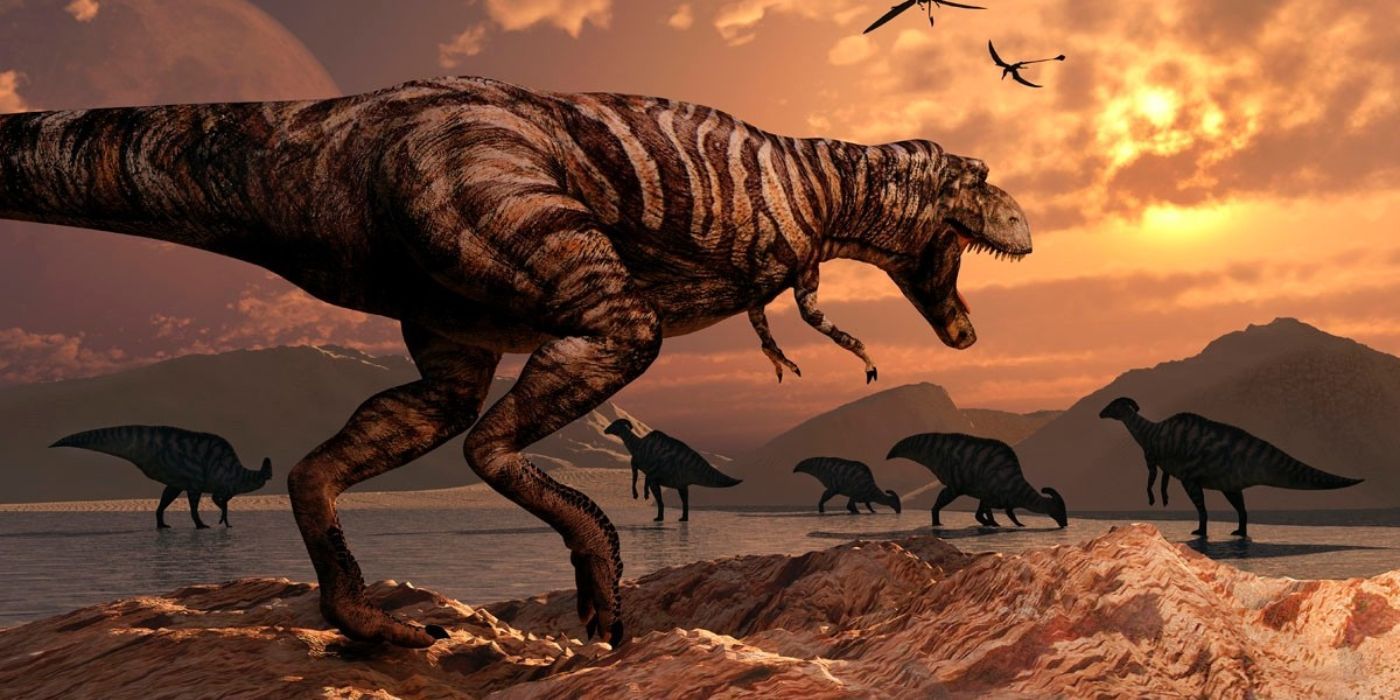The Jurassic Park franchise has captivated the masses with its scientific yet fantastical universe. This blend of fact and fiction culminates in a simple, effective basis: the reappearance of dinosaurs. As seen throughout the films, the reemergence of these prehistoric beasts is phenomenal, but not without its dangers. Finally, after numerous films, the consequences of the dinosaurs' return are coming to fruition in Jurassic World: Dominion.
While the specifics of the story are unknown, it likely pertains to the conclusion of Jurassic World: Fallen Kingdom. This idea is furthered by the Jurassic World: Dominion prologue. Moreover, the introductory film presented a multitude of dinosaurs for fans to admire and study. Knowing these prehistoric beasts grants fans insight into what was and what is to come.
10 Dreadnoughtus
- Name Meaning: "Fears Nothing"
- Family: Titanosauridae
- Period: Cretaceous
- Discovered: Patagonia, Argentina, in 2005
- Diet: Herbivorous
- Size: Height – 18 meters; Length – 26 meters; Weight – 58,967 kilograms
- Speed: Unknown
The Dreadnoughtus was an herbivorous titanosaur that lived during the Late Cretaceous Period. This gentle giant is best known for its colossal size. The Dreadnoughtus utilized its humongous figure to reach tall or distant vegetation. Its immense frame dissuaded even the most capable predators from hunting it.
The Jurassic World: Dominion prologue features a Dreadnoughtus herd peacefully enjoying a lake. They seem unbothered by the nearby flocks of pterosaurs, or even the sizeable Quetzalcoatlus. The towering Dreadnoughtus will likely appear among the countless escaped dinosaurs, inadvertently wreaking havoc as they roam the civilized world.
9 Quetzalcoatlus
- Name Meaning: "Feathered Serpent God"
- Family: Azhdarchidae
- Period: Cretaceous
- Discovered: Big Bend National Park, Texas, in 1971
- Diet: Carnivorous
- Size: Height – 5.4 meters; Length – 12 meters; Weight – 250 kilograms
- Speed: 128 kmh
The Quetzalcoatlus was a carnivorous pterosaur that lived during the Late Cretaceous Period. This imposing avian is revered for its towering size. Despite its tremendous figure, the Quetzalcoatlus could reach impressive speeds without difficulty. However, it was terrestrial-based, meaning it spent considerable time on land, likely hunting smaller dinosaurs.
The Jurassic World: Dominion prologue displays Quetzalcoatlus gathering around a dinosaur corpse. They dismiss nearby Pteranodons, solidifying their superiority by disbanding the once-feared flock.
8 Ankylosaurus
- Name Meaning: "Fused Lizard"
- Family: Ankylosauridae
- Period: Cretaceous
- Discovered: Gilbert Creek, Montana, in 1906
- Diet: Herbivorous
- Size: Height – 3 meters; Length – 8 meters; Weight – 7,983 kilograms
- Speed: 9 kmh
The Ankylosaurus was an herbivorous armored dinosaur that lived during the Late Cretaceous Period. This living tank is recognizable by its thick plates and club-like tail. The Ankylosaurus' natural defenses made it a formidable herbivore. Its plating is capable of withstanding numerous blows, and its club could easily shatter bones.
The Jurassic World: Dominion prologue features an Ankylosaurus herd drinking from a body of water, undisturbed by the dangers of the Late Cretaceous Period. It displays the peaceful nature of these armored dinosaurs, despite their destructive capabilities.
7 Pteranodon
- Name Meaning: "Toothless Wing"
- Family: Pteranodontidae
- Period: Cretaceous
- Discovered: Smoky Hills, Kansas, in 1871
- Diet: Piscivorous
- Size: Height – 2 meters; Wingspan – 6 meters; Weight – 50 kilograms
- Speed: 128 kmh
The Pteranodon was a piscivorous pterosaur that lived during the Late Cretaceous Period. This prehistoric flying reptile is the best-documented pterosaur, with over a thousand specimens discovered. The extensive amount of Pteranodon fossils has led to numerous fascinating findings such as the Pteranodon's sea-based nature and ability to dive for fish, similar to that of an Albatross.
The Jurassic World: Dominion prologue presents a flock of Pteranodons soaring the skies and treading the land. Although once a notorious pterosaur in the original Jurassic Park films, the Pteranodon is now humbled by the imposing Quetzalcoatlus.
6 Oviraptor
- Name Meaning: "Egg Thief"
- Family: Oviraptoridae
- Period: Cretaceous
- Discovered: Flaming Cliffs, Mongolia, in 1923
- Diet: Omnivorous
- Size: Height – 1.5 meters; Length – 1.6 meters; Weight – 40 kilograms
- Speed: 69 kmh
The Oviraptor was an omnivorous oviraptorid that lived during the Late Cretaceous Period. Initially, paleontologists believed that this dinosaur's diet consisted primarily of eggs, hence its deplorable name. However, later evidence revealed that the Oviraptor was omnivorous. Thus, its diet presumably consisted of small animals, seeds, nuts, leaves, and possibly eggs as well.
The Jurassic World: Dominion prologue depicts an Oviraptor raiding a dinosaur nest of its eggs, keeping true to the disreputable name that paleontologists provided it. Considering the Oviraptor's nature and diet, it will likely be a more significant threat to animals rather than humans in the civilized world.
5 Nasutoceratops
- Name Meaning: "Large-nosed Horned Face"
- Family: Ceratopsidae
- Period: Cretaceous
- Discovered: Escalante National Monument, Utah, in 2006
- Diet: Herbivorous
- Size: Height – 1.8 meters; Length – 5 meters; Weight – 1,542 kilograms
- Speed: Unknown
The Nasutoceratops was a herbivorous ceratopsian that lived during the Late Cretaceous Period, whose most distinguishing and intriguing feature is its rounded horns. Rather than bearing the straight horns present in most ceratopids, the Nasutoceratop's horns are more akin to those of cattle. Nonetheless, its horns served their purpose, as they could inflict grievous injuries upon any predator.
The Jurassic World: Dominion prologue features a large herd of Nasutoceratops, seemingly migrating to a new region. Although most of these ceratopids are marching, others bathe in a nearby body of water or survey the land for dangers.
4 Moros Intrepidus
- Name Meaning: "Harbinger of Doom"
- Family: Tyrannosauridae
- Period: Cretaceous
- Discovered: Emery County, Utah, in 2019
- Diet: Carnivorous
- Size: Height – 1 meter; Length – 1.2 meters; Weight -–78 kilograms
- Speed: Unknown
The Moros Intrepidus was a carnivorous theropod that lived during the Late Cretaceous Period. Surprisingly, it is the ancestor of one of the most venerable and mightiest dinosaurs, the Tyrannosaurus Rex. Thus, the Moros Intrepidus was a significant paleontological discovery.
The Jurassic World: Dominion prologue presents a Moros Intrepidus eating scraps from a Giganotosaurus's teeth, revealing a symbiotic relationship similar to that of a Plover bird and Crocodile; in which the former receives food and the latter clean teeth. While much about the Moros Intrepidus is unknown, it likely will not be a considerable danger to the modern world considering its relatively small size.
3 Iguanodon
- Name Meaning: "Iguana Tooth"
- Family: Iguanodontidae
- Period: Jurassic - Cretaceous
- Discovered: Sussex, England, in 1822
- Diet: Herbivorous
- Size: Height – 3.6 meters; Length – 13 meters; Weight – 2,721 kilograms
- Speed: 24 kmh
The Iguanodon was a herbivorous iguanodontid that lived during the Late Jurassic and Early Cretaceous Periods. This dinosaur is among the most well-documented in paleontology, chiefly due to its early discover. The Iguanodon influenced many of the practices and guidelines of paleontology utilized today, such as the process of reconstructing an animal, as the Iguanodon underwent countless incorrect restorations.
In the Jurassic World: Dominion prologue, an Iguanodon is saved from becoming a Giganotosaurus's meal. A Tyrannosaurus Rex approaches the Giganotosaurus, granting the Iguanodon time to escape, leaving the prehistoric behemoths to clash.
2 Giganotosaurus
- Name Meaning: "Giant Southern Lizard"
- Family: Carcharodontosauridae
- Period: Cretaceous
- Discovered: Patagonia, Argentina, in 1933
- Diet: Carnivorous
- Size: Height – 6 meters; Length – 13 meters; Weight – 7,257 kilograms
- Speed: 50 kmh
The Giganotosaurus was a carnivorous theropod that lived during the Late Cretaceous Period. Although more evidence is needed, this dinosaur is possibly the grandest theropod in existence, a position currently held by the Tyrannosaurus Rex. Regardless, the Giganotosaurus's physical prowess is enough for paleontologists to label it as the apex predator of its time.
In the Jurassic World: Dominion prologue, a Giganotosaurus confronts a Tyrannosaurus Rex that encroached on its territory. After a short yet violent battle, the Giganotosaurus defeats the Tyrannosaurus Rex, to the dismay of many Jurassic Park fans. As confirmed by the director Colin Trevorrow, the Giganotosaurus will be the main antagonist of Jurassic Park: Dominion.
1 Tyrannosaurus Rex
- Name Meaning: "Tyrant Lizard King"
- Family: Tyrannosauridae
- Period: Cretaceous
- Discovered: Hell Creek, Montana
- Diet: Carnivorous
- Size: Height – 4 meters; Length – 12 meters; Weight – 7,000 kilograms
- Speed: 27 kmh
The Tyrannosaurus Rex was a carnivorous theropod that lived during the Late Cretaceous Period. It is possibly the most recognizable and famous dinosaur in the world, and is an awe-inspiring wonder of paleontology. Being among the last dinosaurs to exist, the Tyrannosaurus Rex grants much insight into prehistory and evolution.
In the Jurassic World: Dominion prologue, a Tyrannosaurus Rex challenges a Giganotosaurus, who defeats the Tyrannosaurus Rex with a powerful bite to the neck. Sixty-five million years later, the fallen Tyrannosaurus Rex's presumed descendant is seen terrorizing a drive-in movie theater. Without a doubt, the Tyrannosaurus Rex will continue devastating the modern world and eventually avenge its ancestor.

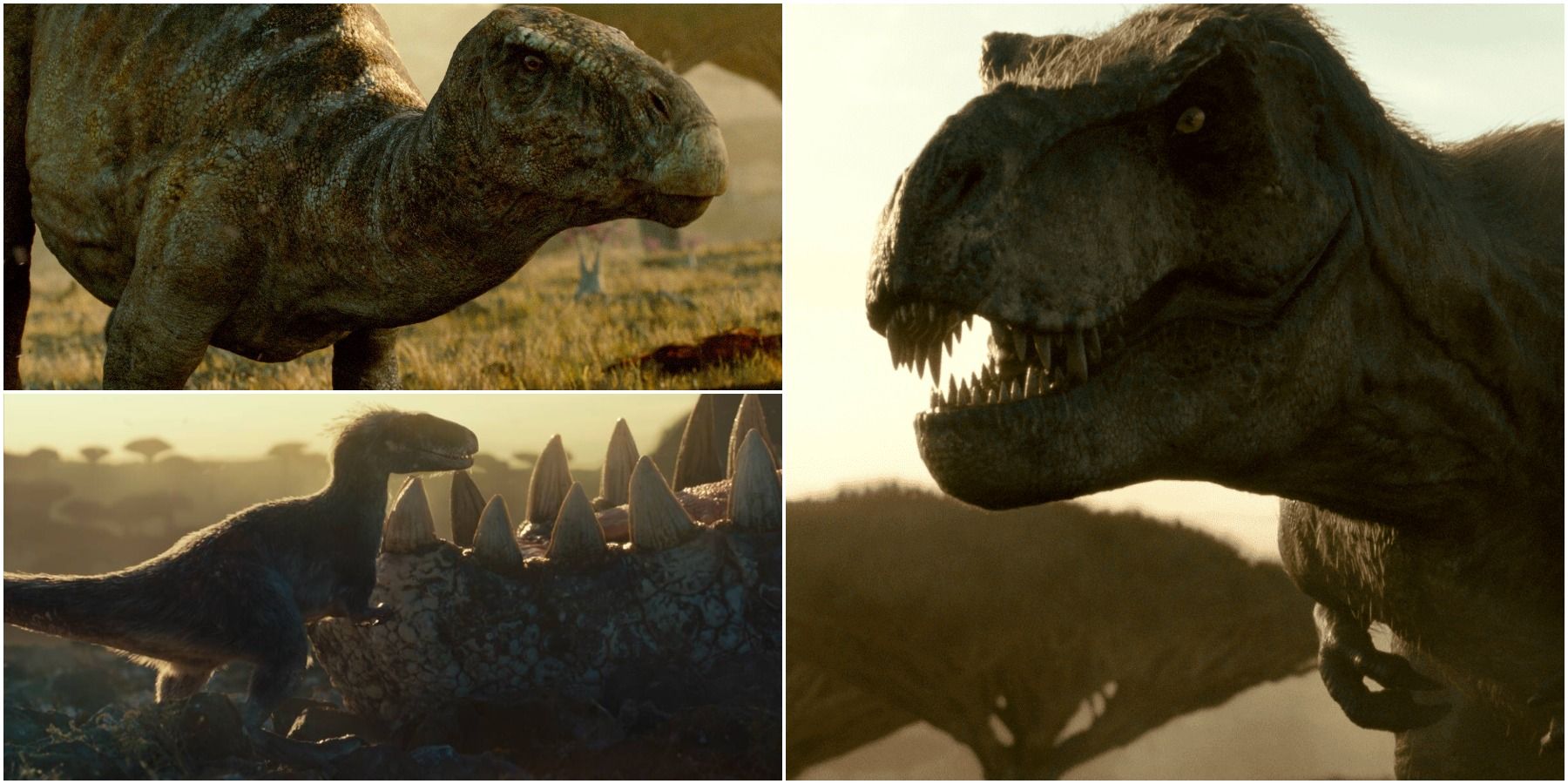
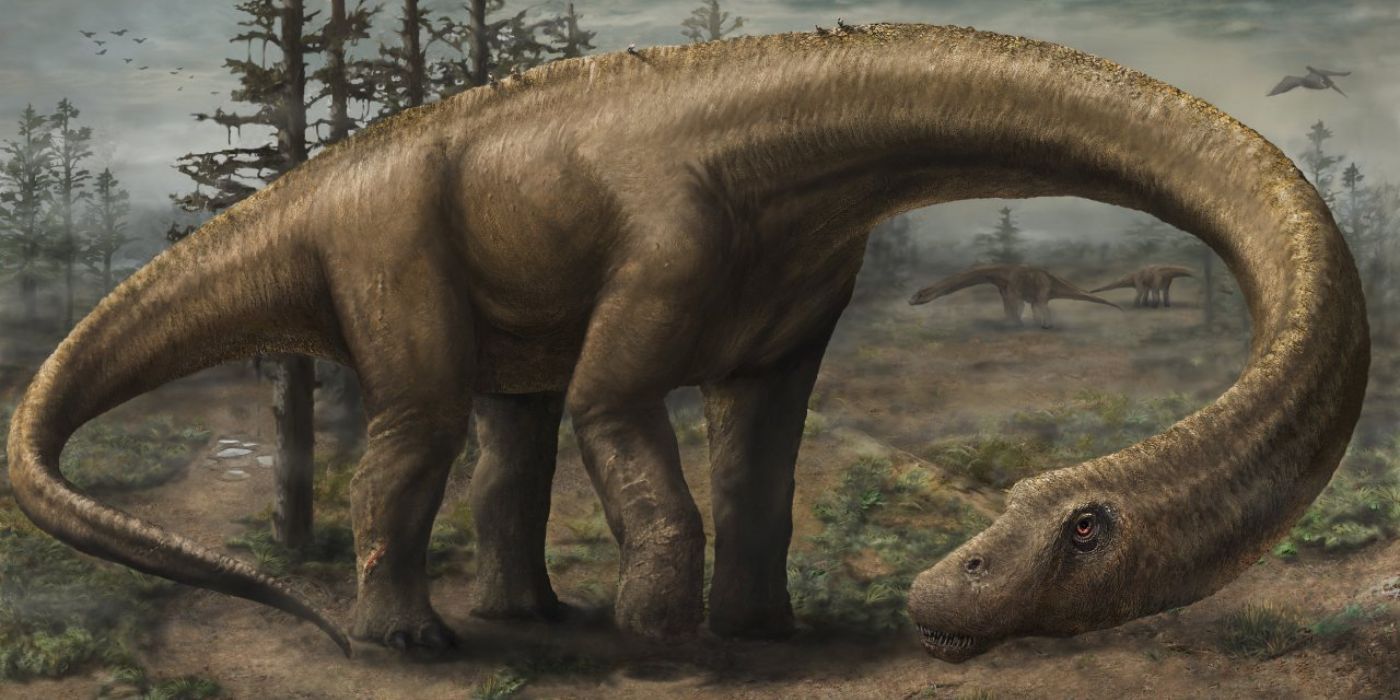
.jpg)
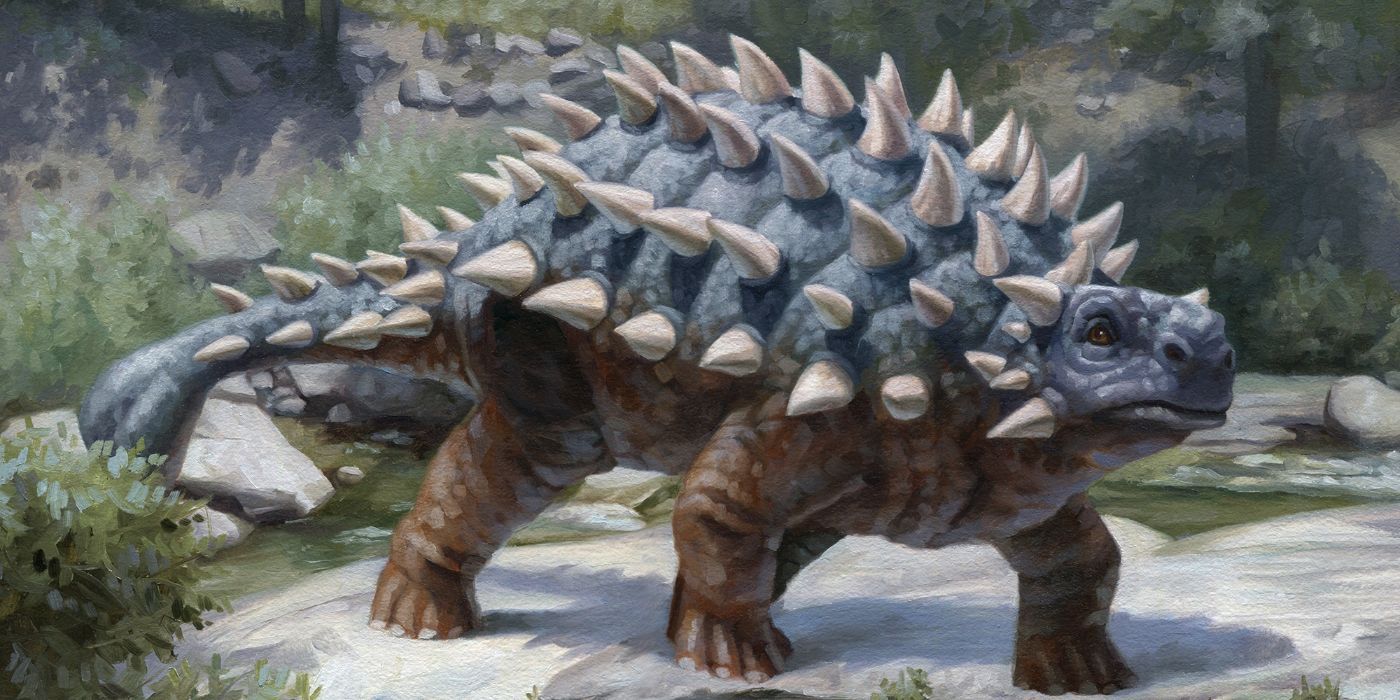
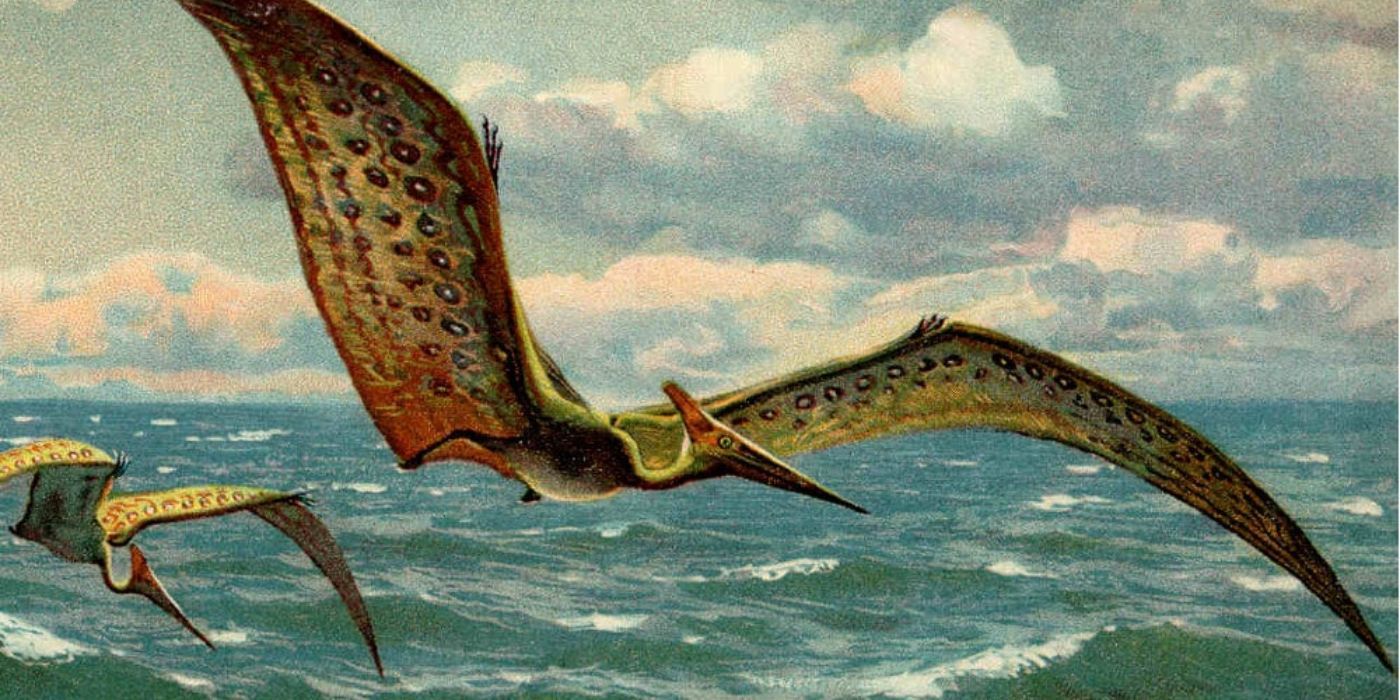
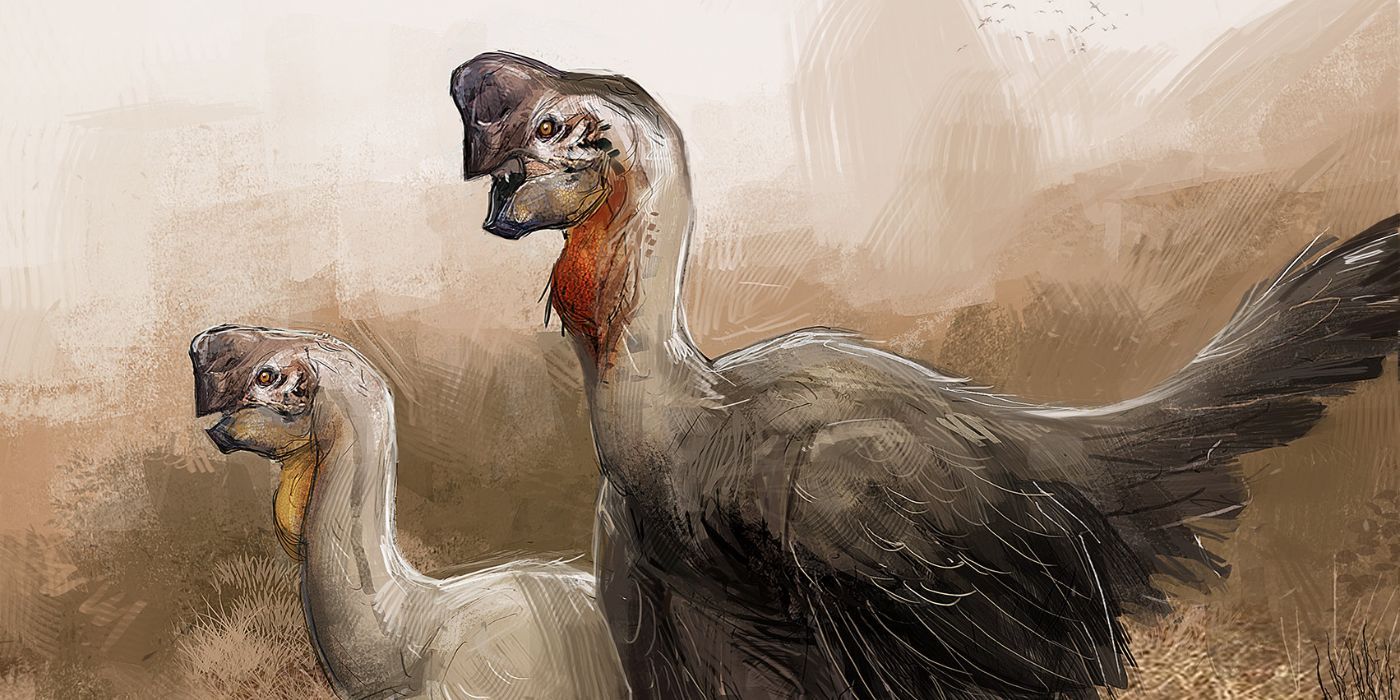
.jpg)
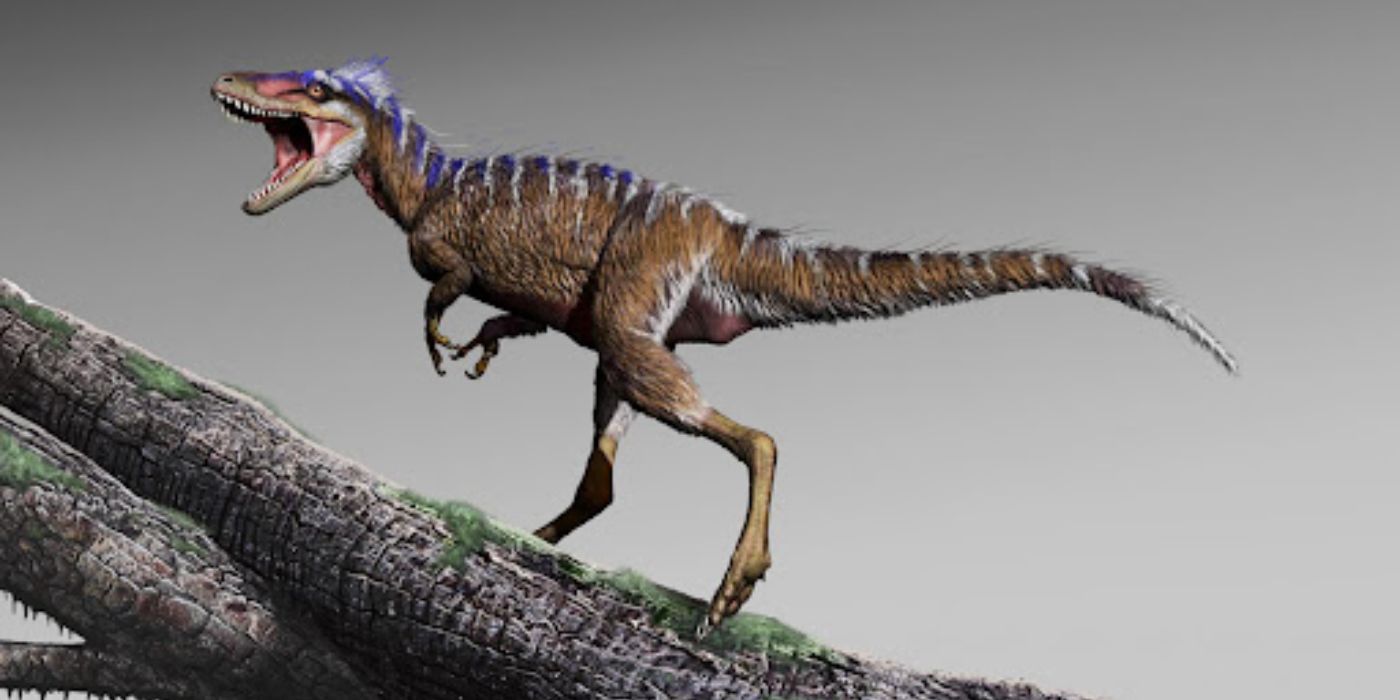
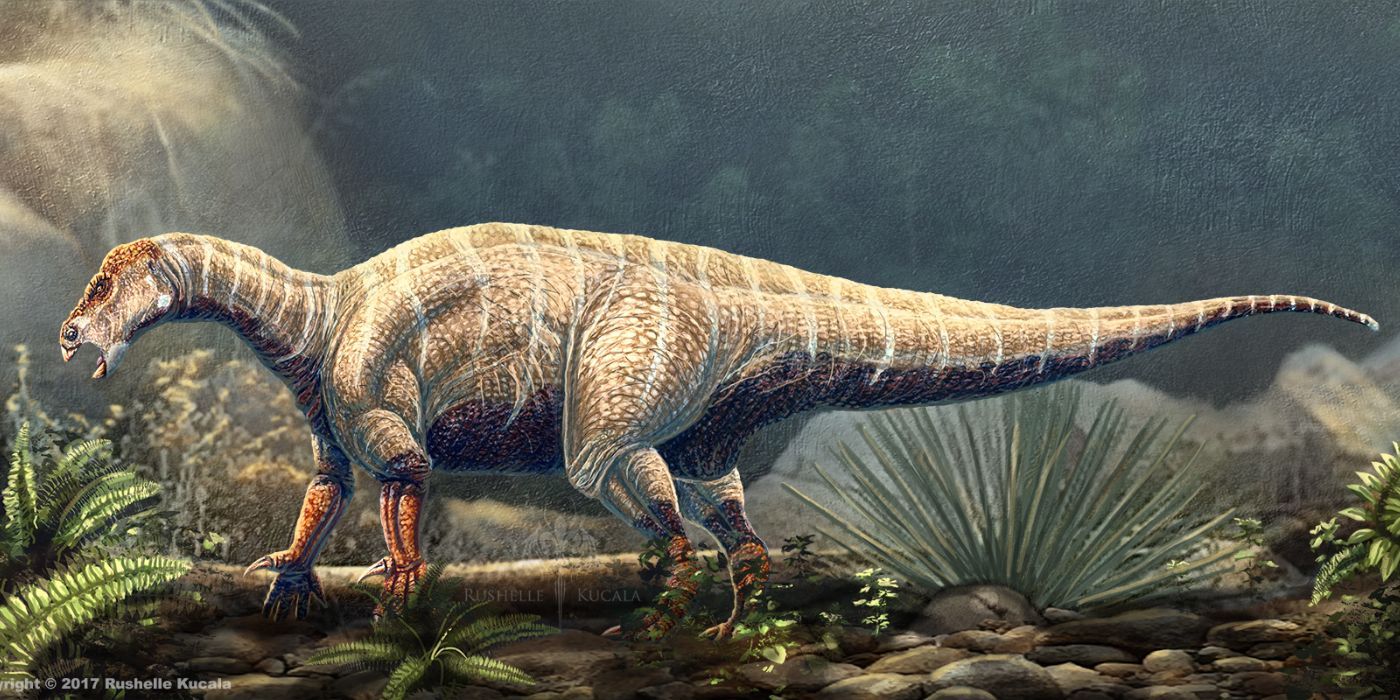
.jpg)
